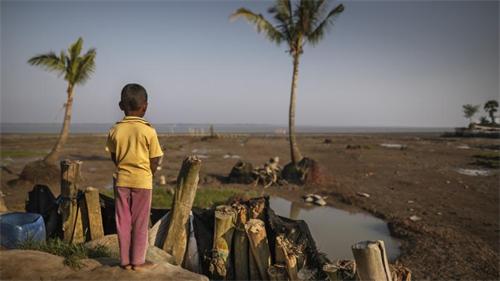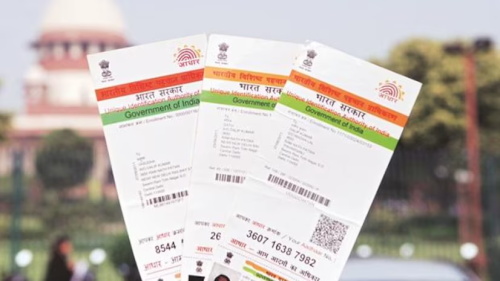Climate Risk and Human Mobility: The Rise of Migration-Linked Insurance Tools

As global temperatures continue to rise and extreme weather events become more frequent, climate change is no longer an abstract environmental issue—it is a tangible force reshaping the way people live and where they can reside. Millions are being forced to abandon their homes, not due to war or political unrest, but because the land they live on is becoming increasingly uninhabitable.
According to data from the United Nations High Commissioner for Refugees (UNHCR), more than 20 million people are displaced each year due to climate-related disasters. Even more alarming, over 100 million people globally have been uprooted by the combined effects of climate change and conflict, with around 70% of refugees originating from countries already severely affected by the climate crisis. By 2050, this number could surge to 1.2 billion. Such large-scale population movements will pose significant challenges to global social structures, economic systems, and political stability.
How Climate Change Fuels Migration Waves
According to assessments by the Intergovernmental Panel on Climate Change (IPCC), billions of people—roughly between 3.3 and 3.6 billion—reside in regions that are particularly susceptible to the effects of climate change. These high-risk zones span across large parts of Africa, South and Southeast Asia, Latin America, low-lying island states, and polar regions like the Arctic. Populations in these areas are more likely to experience the direct and compounding impacts of rising temperatures, extreme weather, and environmental degradation.
In these fragile zones, extreme heat and prolonged droughts are severely undermining agricultural production. Farmers, unable to sustain their livelihoods, are often compelled to migrate to urban areas or across borders in search of new opportunities. Similarly, disasters like storms, floods, and coastal erosion are repeatedly destroying homes and infrastructure, pushing once-stable households into homelessness. Climate change is thus evolving into a kind of "slow-onset disaster"—not as sudden or violent as earthquakes or wars, but far more persistent and difficult to manage, with long-lasting effects on population dynamics.
The Limits of Traditional Insurance: Bound by Borders
While insurance has long been a cornerstone of risk management, traditional insurance models struggle to meet the needs of climate-driven migrants. Many health insurance plans, for instance, are designed with local service networks in mind. If a policyholder relocates abroad, coverage may become invalid or severely limited. Even so-called "global" insurance plans often face complications, such as differing definitions of hospital standards, medical procedures, and reimbursement rates across countries—leaving migrants in precarious coverage gaps.
Moreover, when incidents occur overseas, policyholders may encounter lengthy claims processes involving translations, notarizations, and legal paperwork—delaying payouts and increasing costs. These bureaucratic inefficiencies make traditional insurance ill-suited to the fast-moving, transboundary risks associated with climate displacement.
Innovative Insurance Tools: A Response to Climate-Driven Migration
To address the shortcomings of conventional insurance, new, more flexible, and technology-driven tools are emerging to support those displaced by climate change.
Parametric insurance offers a radical shift from traditional claim models. Instead of requiring proof of actual loss, these policies pay out automatically when predefined environmental thresholds—like wind speeds exceeding 100 km/h or rainfall surpassing a certain level—are met. By eliminating the need for on-site damage assessments, parametric insurance allows for quicker payouts, making it ideal for disaster-prone areas.
Portable insurance is another innovation designed to “travel with the insured.” These policies remain valid even if individuals change jobs, move residences, or cross national borders. For climate migrants who frequently relocate, portable insurance provides consistent protection and avoids the risk gaps caused by interrupted coverage.
The integration of insurtech—insurance technology—is also enhancing the feasibility and responsiveness of these tools. Blockchain technology, with its decentralized and tamper-proof nature, enables automated claim execution through smart contracts, reducing human error and disputes. Meanwhile, Internet of Things (IoT) devices can provide real-time environmental data—like water levels, wind speed, and humidity—supporting a seamless system of early warning, response, and compensation.
New Tools, New Challenges
Despite these advances, such insurance innovations cannot escape the realities of global inequality. Wealthier migrants are more likely to access information, afford premiums, and secure robust protection. In contrast, low-income individuals—who are often the most vulnerable to climate impacts—may be left out of these new systems, potentially exacerbating social vulnerability.
Cultural and linguistic barriers also pose significant hurdles. Even with multilingual customer service, migrants may struggle to understand complex insurance terms or navigate unfamiliar legal frameworks, especially when cultural contexts differ widely.
A Shifting Role for Insurance
The role of insurance is undergoing a fundamental transformation—from offering post-disaster compensation to enabling proactive risk management and climate adaptation. A well-designed insurance product can do more than just provide financial relief after a crisis; it can incentivize preparedness, support resilience, and reduce long-term vulnerabilities.
As climate-related displacement becomes a defining issue of our time, insurance must evolve into a forward-looking tool that ensures migration is conducted with dignity and protection. No longer merely the last line of defense, insurance has the potential to become the first shield in a global strategy for climate resilience.



